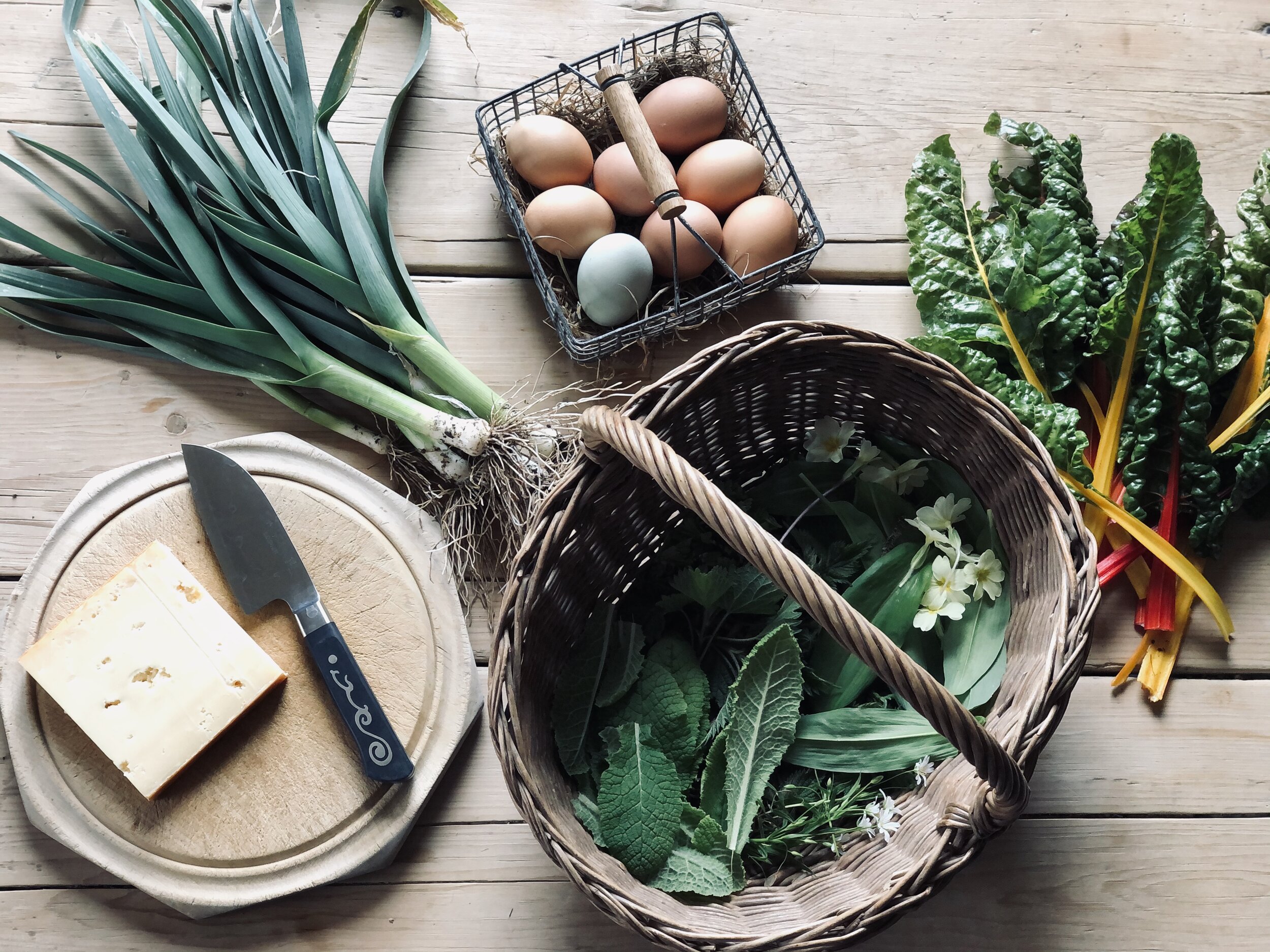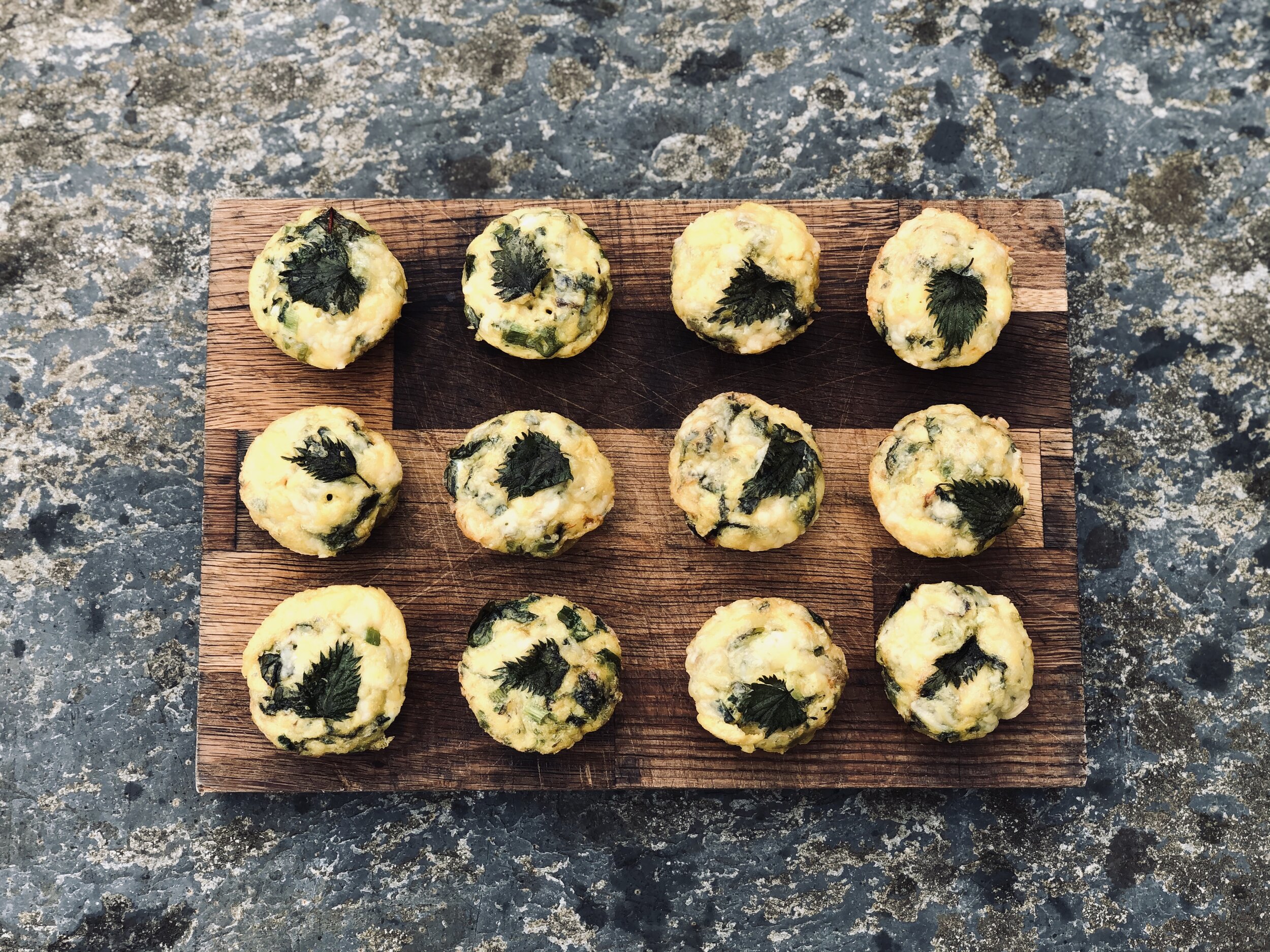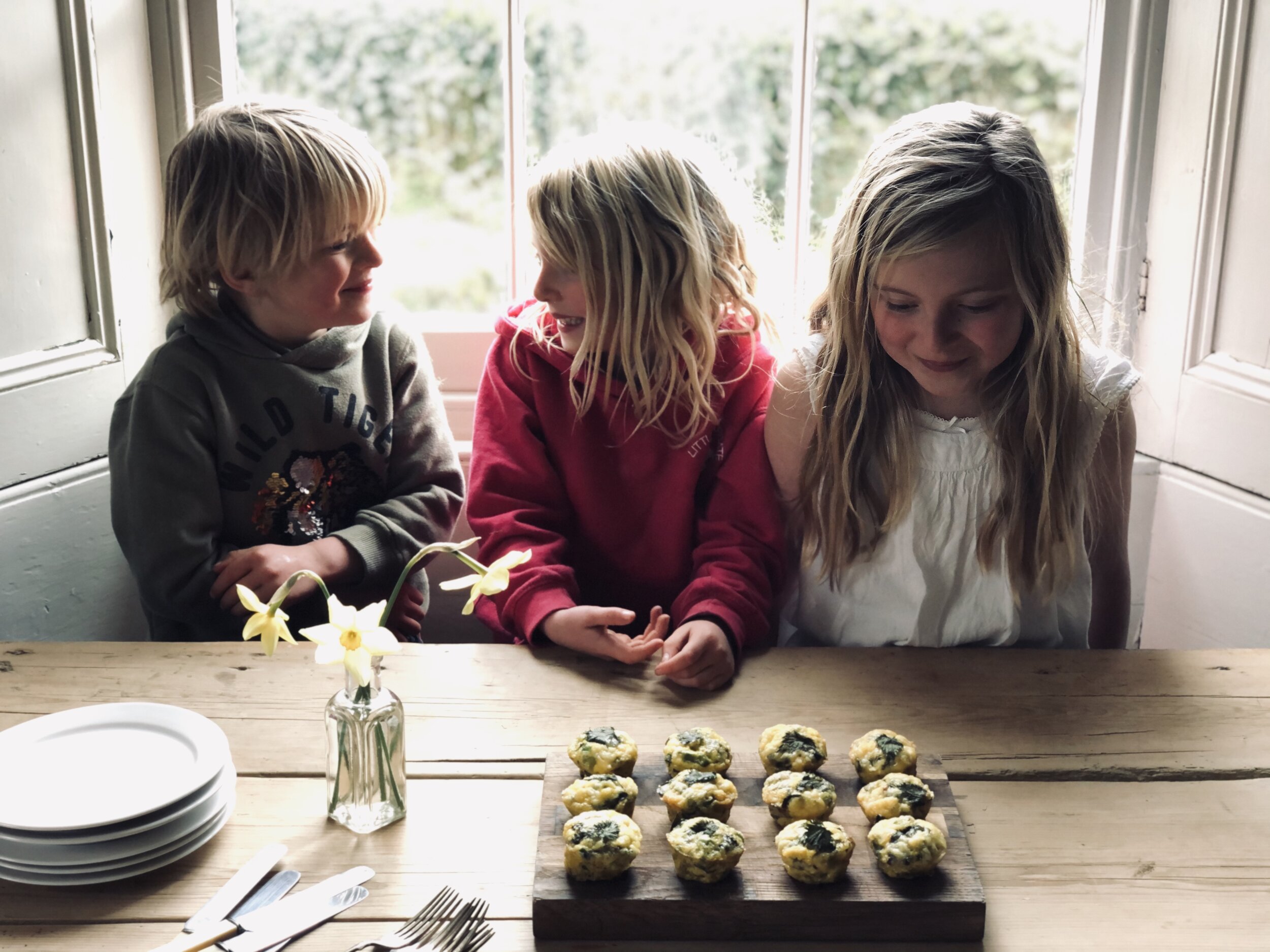With spring beginning to unfurl in the garden and hedgerows, this breakfast or light brunch dish celebrates the humble egg and the fresh produce that we have access to at this time of year. Our hens have just started laying regularly and it’s lovely to have a good supply to be using with our meals.
This is a very flexible recipe; include the plants that you have access to whether you are growing them, foraging for them - which makes for a lovely activity with kids for those with access to the countryside at this time (see foraging guidelines below), or sourcing them from a local producer or supermarket. Likewise with the cheese, I used mature Cornish Gouda from our lovely friends just along the lanes, but you could substitute this for any cheese you have that needs using up.
I do hope you enjoy this recipe, wishing you well
Tia x
Spring Muffin Frittatas with Foraged Leaf Salad
Makes 12 fritatta muffins, with a light salad for 6 people
Ingredients
6 large eggs
150g grated or finely chopped cheese, 100g to combine with the egg mixture & 50g for topping (I used Cornish Gouda but you can use whatever you have to hand. A hard cheese works best for the 50g topping)
1 tsp dried thyme or other dried herbs
Salt & pepper
Olive oil
2 medium leeks (or alternative such an onions, carrots, celery)
Handful of rainbow chard, washed
Handful wild garlic
Handful nettles (separate 12 of the smaller leaves to decorate the top of the frittatas with, remove the rest of the leaves from the stems and set aside to go inside the frittatas)
2 large handfuls primrose leaves (see foraging guidelines below)
2 large handfuls young hawthorn leaves
Handful stitchwort flowers (see foraging guidelines below)
Drizzle of gorse syrup (recipe below) or 1 tsp honey
Ingredients notes: If you don’t have access to the countryside for foraging at this time, simply choose any leaves to make a salad, I love to include some leaves with a bit of a bite such as rocket or celery leaves. Check what you have in stock that needs to be used up, you could add fresh herbs or a simple oil and balsamic dressing if you want to add more flavour to the leaves you have to hand.
You can substitute the leeks, chard, nettles and wild garlic for any vegetables you have to hand that need using up such as carrots, parsnips, celery, onions or others; finely chop, lightly sauté then add to the egg mixture.
Method
Begin by gathering your foraged and garden produce, if using. For this recipe I foraged for nettle leaves, wild garlic, primrose leaves, hawthorn leaves and chickweed flowers; I picked leeks and rainbow chard from the garden veg patch.
Grease a 12 hole muffin tin.
Heat oven to 180 C.
Prepare the leeks: Chop off the ends, wash them then separate the leaves from the stalks. Chop the leaves into lengths of approximately 5cm then set aside in a large baking . Finely chop the stalks.
Prepare the rainbow chard: wash then separate the leaves from the stalks. Chop the stalks into lengths of approximately 5cm and place in the same baking tray as the leek leaves. Finely chop the chard leaves.
Prepare the nettles: wash, remove the leaves from the stalks. Set aside at least 12 small leaves to use to decorate the tops of the muffin frittata. Finely chop the rest of the nettle leaves.
Prepare the wild garlic: wash then finely chop.
In a frying pan add a glug of olive oil then gently sauté the chopped leek stalks for a few minutes, add the chopped rainbow chard leaves and continue to cook for another couple of minutes, then add the chopped nettles and wild garlic, cook for a further minute then remove from heat.
Grate the cheese, set aside 100g of grated cheese in one bowl and 50g of the grated cheese in a separate bowl to use later.
In a large bowl crack the eggs then mix with a fork. Add salt & pepper, 100g of the grated cheese and the sautéed leek, rainbow chard, nettle & wild garlic mixture. Combine well together.
Using a tablespoon, spoon the egg mixture into the muffin holes. Be careful not to fill too high, leave a little gap at the top as the muffins will rise. Sprinkle the remaining 50g of grated cheese on top, then place one nettle leaf on top of the final layer of cheese, to decorate.
Place in the oven for approx 20 minutes, checking as you go. The frittatas are ready when they don’t wobble if you move the tray, and should go a light golden colour on top.
Once the frittatas are in the oven, drizzle olive oil over the leek leaves and rainbow chard stalks that are in a baking tray, add a little salt and paper and pop them in the oven too. Cook for around 10-15 minutes until starting to crisp then remove from the oven and set aside.
While the oven food is cooking prepare the primrose leaves for the salad: roughly tear the primrose leaves and add them to a saucepan (you can use the same saucepan you sautéed the leek mixture in), add a drizzle of olive oil and the honey or, if you have it, a drizzle of gorse syrup. Sauté for a minute or two until the primrose leaves are just starting to wilt.
When the frittatas are ready, remove from the oven and leave for a minute or so before removing onto a wire rack too cool. Try not to handle them too much until they have cooled and firmed slightly.
Assemble the dish: place one or two frittatas on each plate then for the salad gather a few wilted primrose leaves and create a small pile on the plate, add some crispy leek and chard stalks, then scatter fresh hawthorn leaves. Place stitchwort flowers on top to decorate.
To make gorse syrup
The kids and I made this following from a foraging walk: we used 1 litre water and 400g granulated sugar, combined them in a saucepan and simmered for 10 minutes then removed from heat and added 5 large handfuls of gorse flowers. We left it overnight then simmered for another 10 minutes in the morning before straining through muslin, bottling and popping in the fridge. This makes lots of syrup - enough for a good few cakes, drinks, salad dressings and anything else you care to make with it - we’d love to know if you have any good ideas!
Foraging guidelines
Do remember to follow responsible foraging guidelines, ensuring you only take plants when there is a plentiful supply, just picking what you need, and never taking the roots. Seek permission before foraging on private land. Here at Botelet Farm there the hedgerows are teeming with primroses and stitchwort, however be aware that in some areas these plants can be scarce and are therefore not suitable for picking. It’s a good idea to check foraging guidelines before setting out, see for example Wild Food UK’s Foraging Code









